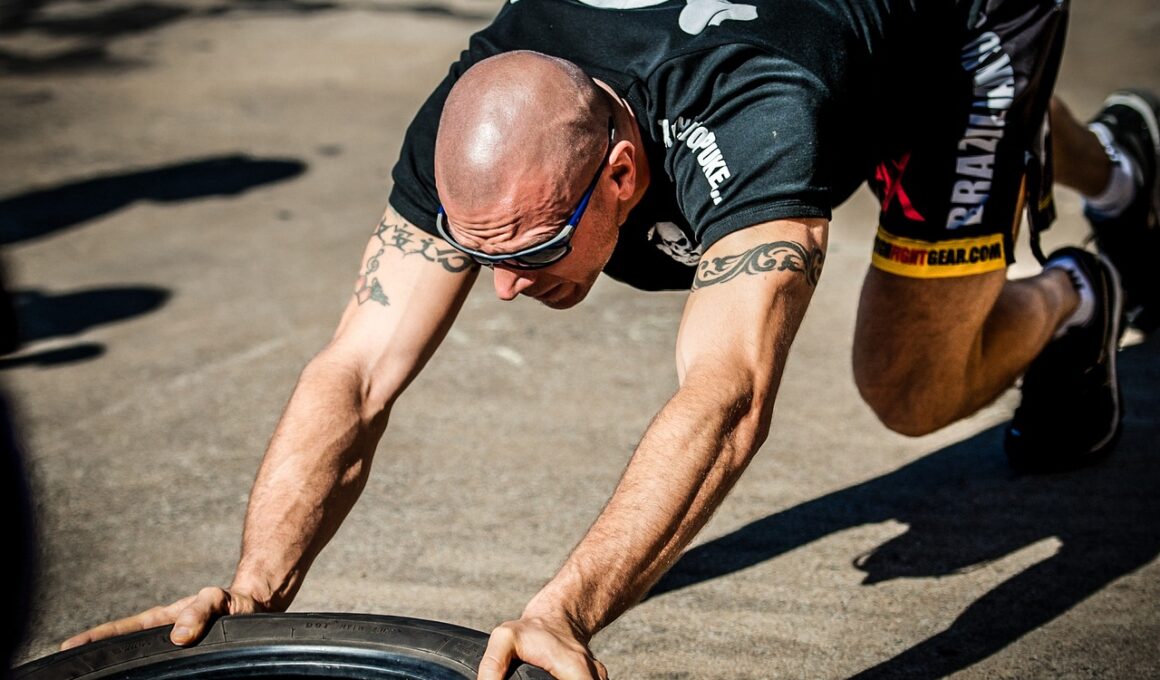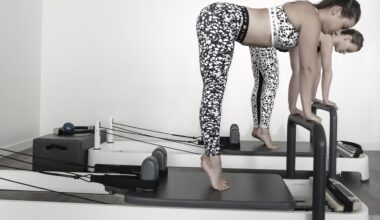Integrating Functional Fitness into Team Sports Conditioning
Functional fitness plays a crucial role in enhancing athletic performance, especially in team sports where multifaceted movements are essential. It focuses on improving strength, mobility, agility, and endurance while emphasizing movements that mimic the demands of specific sports. Incorporating functional fitness into conditioning programs allows athletes to develop key physical attributes effectively. This approach not only aids in performance enhancement but also reduces injury risks. Traditional training methods may not address the specific needs of athletes engaging in dynamic sports performance. Therefore, integrating functional fitness allows coaches to create tailored workout regimens that resonate with the distinct demands of their sport. Additionally, effective functional training programs include various activities that replicate on-field movements, ensuring athletes can transfer their training to actual gameplay scenarios. Athletes practicing functional fitness movements are better prepared for competitive challenges, as they become accustomed to explosive movements associated with their respective sports. Thus, functional fitness provides athletes with the tools necessary for sustained performance and injury prevention, enabling them to peak at the right times during their competitions.
The concept of sports-specific functional training is based on the principle of specificity, which suggests that training should replicate the movements and intensity of the actual sport. It also involves conditioning for skills that enhance performance outcomes. This training method goes beyond general fitness to include plyometrics, agility drills, and balance exercises specifically designed for each sport. For instance, a soccer player will benefit from exercises targeting dribbling and sprinting, while a basketball player may incorporate jumping and lateral movement training. Engaging in sport-specific drills increases functional capacity and prepares athletes physically and mentally for the game environment. Coaches can adapt these exercises to match athletes’ skills and gradually increase their complexity. By doing this, athletes can overcome plateaus and continuously enhance their performance levels. Moreover, integrating technology into training allows coaches to monitor progress and adjust programs dynamically. Utilizing feedback mechanisms ensures that athletes are not only improving in strength but also coordinating their movements effectively. In summary, sports-specific functional training emphasizes tailored conditioning that aligns with the millions of micro-movements athletes experience in competitive situations.
Benefits of Sports-Specific Functional Training
The benefits of integrating functional fitness into team sports conditioning are profound and impactful for athletes. Firstly, functional training helps enhance overall athletic performance by promoting strength and endurance tailored specifically around the requirements of their respective sports. An improved ability to perform movements effectively translates into superior game performance, giving athletes a competitive edge. Secondly, functional training significantly reduces injury risks by promoting body awareness, flexibility, and balance. Reducing susceptibility to injuries leads to athletes spending more time on the field, thus maximizing their training benefits. Additionally, this training fosters enhanced conditioning for both aerobic and anaerobic systems, as functional exercises tend to be high-intensity. These workouts also improve core stability, which is essential for athletes operating under dynamic conditions. Moreover, functional fitness can enhance team cohesion during training sessions, as these exercises often involve collaborative drills. Teams that train together not only strengthen their physical abilities but also build stronger interpersonal relationships. Ultimately, integrating functional fitness leads to athletes being well-prepared, performing at optimal levels, and experiencing a lower rate of injury occurrence.
When developing a functional fitness program tailored for team sports, it’s vital to consider the unique demands of each sport. Workouts should incorporate exercises that mimic the movements performed in that sport, such as sprinting, jumping, and lateral movements. For example, building a baseline strength program will include resistance training focusing on compound movements like squats and deadlifts. Moreover, agility training should focus on footwork drills, maximizing speed and quick direction changes. Plyometric exercises also play a significant role, emphasizing explosive power, critical for moves such as jumping or sprinting. Coaches can implement circuit training to combine various components, scheduling sessions focusing on endurance, speed, strength, and flexibility—all integrated components of successful athlete performance. This helps ensure athletes develop all necessary physical attributes effectively and efficiently. Additionally, cooldown recovery techniques, such as yoga or proper stretching, are vital for reducing soreness and promoting muscle recovery. Integrating nutrition advice with physical training ensures athletes get optimal fuel for performance and recovery, rounding out a comprehensive approach to sports-specific functional training and conditioning.
Monitoring Progress and Adaptation
Monitoring athletes’ progress and adapting functional fitness programs are crucial for ensuring continual performance improvements. Coaches should utilize a multifaceted tracking system that assesses both physical and skill-related metrics, enabling them to identify strengths and weaknesses effectively. Regular assessments help determine if athletes are improving in their speed, endurance, or strength metrics. Evaluating performance outcomes after training sessions can provide insights into which specific drills yield the best results. Furthermore, coaching strategies should embrace flexibility, allowing trainers to quickly adapt programs based on athlete response and overall performance trends. Utilizing technology, such as wearable fitness trackers, offers data-driven insights into athletes’ health metrics, facilitating fine-tuned adaptations for enhanced performance. Moreover, incorporating periodic feedback sessions with the athletes themselves opens lines of communication. This dialogue can provide insights into how they feel about their training and performance progression. Ultimately, successful functional training for team athletes requires a flexible mindset, constant monitoring, and timely adjustments to ensure each athlete thrives in their specific sport environment.
The integration of functional fitness into team sports conditioning has revolutionized the way athletes prepare for their competitive environments. Coaches and trainers must recognize that successful athlete performance is not solely determined by technical skills but also by physical preparedness. Additionally, placing emphasis on multi-dimensional exercises ensures athletes are building a well-rounded fitness base. Integrative approaches break traditional barriers of solo training, creating dynamic environments where athletes can thrive. Moreover, team-based functional training fosters camaraderie, spirit, and collective responsibility for training outcomes. Athletes supporting one another during sessions build trust and improve motivation. Emphasizing teamwork during functional exercises also translates into better communication and understanding during actual competitions, as players become accustomed to synchronizing their movements. As the landscape of sports training continues to evolve, the integration of functional workouts will likely become an industry standard. The coming years may see even further advancements in training methodologies aimed at enhancing overall athlete performance in team sports. Therefore, organizations should embrace innovative techniques to leverage functional fitness for optimal athlete development and success in sports engagement.
Conclusion: The Future of Team Sports Training
As we move forward, the future of team sports training effectively integrates functional fitness methodologies as standard practice. This transition involves recognizing the critical role that these workouts play in enhancing athletic performance and reducing injury rates. Trainers and coaches must remain vigilant in their pursuit of innovative techniques to keep pace with the ever-evolving demands of their athletes. Embracing scientific research and advancements within the field is vital for continued improvement in athlete training programs. Additionally, embracing a holistic approach involves nutrition, recovery, and mental conditioning. This comprehensive training model maximizes an athlete’s physical potential, ensures quicker recoveries, and fosters mental resilience. Consequently, organizations that implement functional fitness into their training systems will yield better performance results. Finally, the athlete-centered approach, tailoring programs to individual needs, solidifies the significance of functional training methods in team sports. As more coaches adopt this perspective, athletes will benefit from enhanced readiness for their respective sports and a competitive edge. The integration of functional fitness thus translates into heightened performance, injury prevention, and the evolution of how team sports training is perceived and executed moving forward.
Moreover, creating a culture of continuous learning encourages athletes and coaches alike to seek new knowledge regarding functional training methods. Athletes themselves should actively seek feedback and remain open to evolving techniques to optimize their training regimens. Collaboration among coaches, athletes, and fitness professionals can introduce additional perspectives, expanding the realm of practical understanding in matters of performance enhancement. Ongoing education is vital to keep pace with emerging trends in the fitness world, ensuring optimal training experiences. Joining workshops, conferences, or hands-on training opportunities further enlightens the fitness community about diverse strategies of condition. Coaching networks facilitate discussions, sharing best practices, and learning from experiences to shape future training developments. Utilizing social media platforms or online communities also helps foster an environment for sharing insights on workouts, promoting accountability amongst athletes. Ultimately, a commitment to growth surrounding functional fitness in team sports keeps all participants engaged, motivated, and enhancing their practices. Champions of team sports conditioning will be those who develop a solid understanding of their athletes and consistently apply innovative approaches to training. This journey will mark a new era in physical fitness tailored specifically for competitive sports.


